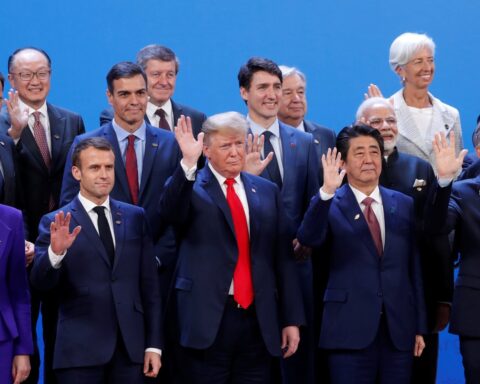That said, the need for cooperative efforts to work toward a better future has never been greater. Priority areas relate to the need to produce and distribute vaccines globally, tackle climate change, and bolster the economic recovery from the crisis.
An IMF report published ahead of the G20 leaders meeting argues that a synchronized infrastructure investment push could invigorate growth, limit scarring, and address climate goals. In fact, when many countries act at the same time, public infrastructure investment could help lift growth domestically and abroad through trade linkages. This positive “spillover” effect could provide an additional boost to global output.
The spillovers created by higher demand are particularly impactful when economic conditions are weak and interest rates low. When economic conditions are strong, higher government spending may push inflation above the central bank’s target and trigger a monetary policy tightening, offsetting some of the initial boost to demand. But when conditions are weak and inflation is well below target, monetary policy is less likely to tighten in response to higher government spending, resulting in a greater output response. The context of ample spare capacity thus amplifies the impact of both domestic public infrastructure spending and the demand that spills over from higher public investment abroad.
Our Chart of the Week illustrates this point. If economies with room to spend were to increase infrastructure investment spending by ½ percent of GDP in 2021, raise it to 1 percent of GDP in 2022, and keep it at that level until 2025, and economies with less fiscal space spend about one third of that amount over the same period, global output could increase by close to 2 percent by 2025 (dashed black line). About a third of that impact would come from cross-border spillovers. To see this, consider a set of hypothetical scenarios where each country raises infrastructure spending on its own, without benefiting from higher spending abroad. The global impact in that case would on average be about 1.2 percent (solid black line).
Bottom line: If G20 countries act together, they can achieve two-thirds more at the same cost than if each country acts alone.
Important additional benefits occur from specific types of infrastructure spending. For example, if such spending prioritizes green investments, it will also strengthen resilience and allow for a cleaner world for the next generation. Efficient mass transit projects, smart electricity grids, and retrofitting of buildings to enhance energy efficiency could be prioritized. Job-intensive public investment such as infrastructure maintenance or public works that are implemented efficiently are also of the essence.
When policymakers across countries work together and implement high-quality, smart spending on infrastructure, the impact of their individual actions can be amplified and provide further support for all economies.
Based on research by Jared Bebee, Oya Celasun, Lone Christiansen, Ashique Habib, Ben Hunt, Margaux MacDonald, and Rafael Portillo.



